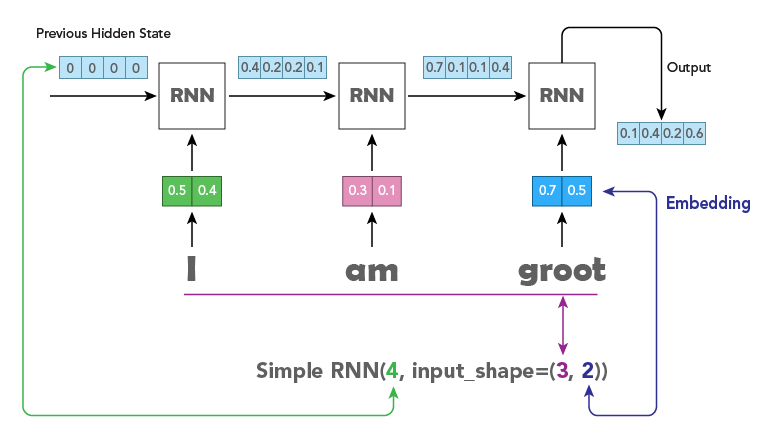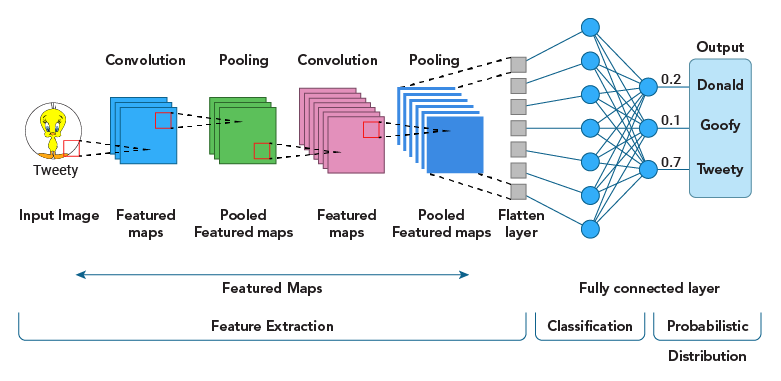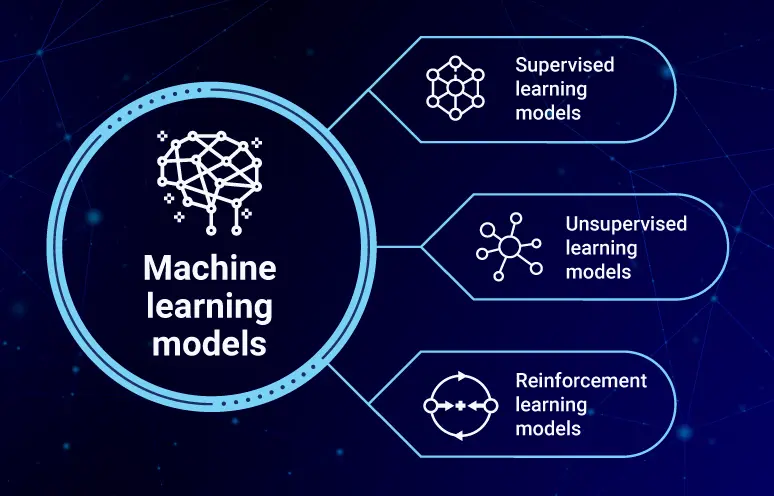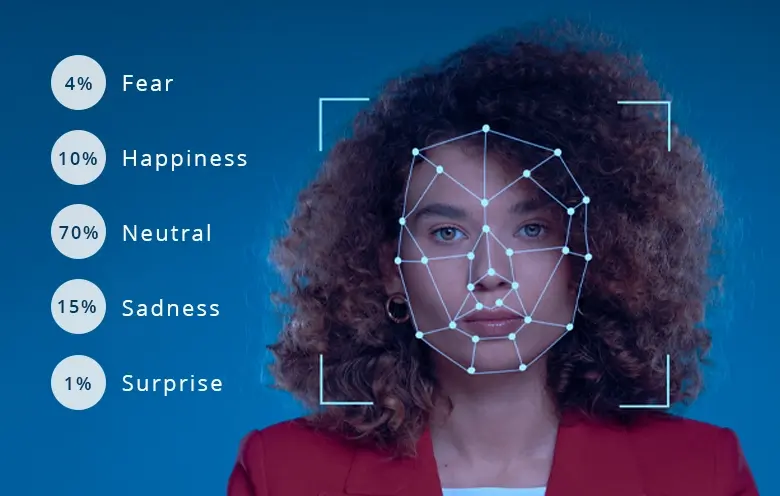Convolutional neural networks (CNNs), recurrent neural networks (RNNs) and artificial neural networks (ANNs) are three of the most powerful machine learning models available today. Each type of network has its own strengths and disadvantages and is best suited to different types of tasks.
In this blog post, we will take a closer look at CNNs, RNNs, and ANNs and discuss their different architectures and benefits. We will also provide examples of the real-world applications of each type of network.
Benefits and use cases of CNNs
Ability to learn spatial patterns: CNNs can learn complex spatial patterns in images, which makes them apt for tasks such as object recognition, scene understanding, and medical image analysis.
Data efficiency: CNNs can learn from a relatively small amount of data, compared to other types of machine learning models. This is because they can extract features from images in a hierarchical manner, which allows them to learn complex patterns without requiring a large amount of data.
Robustness to noise: CNNs are relatively robust to noise in images, making them suitable for real-world applications.
Use cases of CNNs
Image classification: CNNs are widely used for image classification tasks, such as identifying objects, faces and scenes in images.
Object detection: The models can perform object detection tasks, such as identifying and localizing objects in images and videos.
Image segmentation: CNNs can also perform image segmentation tasks, such as segmenting images into different regions and labelling each region with a semantic class.
Video analysis: They are used for video analysis tasks, such as action detection, object tracking and video scene segmentation.
Medical image analysis: They are also used in medical image analysis tasks, such as detecting diseases and tumours in medical images.
Real-world applications of CNNs
Self-driving cars: Self-driving cars leverage CNNs to identify objects on the road, such as other vehicles, pedestrians and traffic signs.
Medical diagnosis: CNNs are used in medical diagnosis to detect diseases and tumors in medical images.
Suggested: comprehensive blog about the key differences between CNNs and GANs.
Benefits and use cases of RNNs
Ability to learn sequential patterns: RNNs can learn long-range dependencies on sequential data, such as text and audio. This makes them well-suited to tasks such as NLP, machine translation, natural language generation (NLG), handwriting recognition, time series analysis and prediction and speech recognition.
Robustness to noise: RNNs are relatively robust to noise in the data.
Use cases of RNNs
Machine translation: RNNs are widely used for machine translation tasks, such as translating text from one language to another.
Text generation: RNNs can also be used for text generation tasks, such as generating creative text formats, like poems, code, scripts, musical pieces, emails, letters, etc.
Speech recognition: RNNs can also be used for speech recognition tasks, such as transcribing audio to text.
Time series forecasting: RNNs can also be used for time series forecasting tasks, such as predicting future stock prices or weather patterns.
Real-world applications of RNNs
Google Translate: Google Translate uses RNNs to translate text from one language to another.
Apple Siri: Apple Siri uses RNNs to recognize speech and generate responses.
Netflix recommendations: Netflix uses RNNs to recommend movies and TV shows to users based on their past viewing history.
Fraud detection: RNNs are used in fraud detection systems to identify fraudulent transactions and activities.
Stock market prediction: RNNs are used in stock market prediction systems to predict future stock prices.
Note: It is important to note that RNNs can be difficult to train due to vanishing and exploding gradient problems. These problems can make it difficult for the network to learn long-range dependencies on the data.
Despite these challenges, RNNs are a powerful tool that can be used to solve a wide variety of real-world problems.
Benefits and use cases of ANNs
Ability to learn complex patterns: ANNs can learn complex patterns in data, which makes them apt for tasks such as image classification, natural language processing, and speech recognition.
Flexibility: ANNs can be used for a wide variety of tasks, depending on the specific architecture. For example, ANNs can be used for image classification, natural language processing, speech recognition, and machine translation.
Scalability: ANNs can be scaled to handle large amounts of data.
Use cases of ANNs
Image classification: ANNs are widely used for image classification tasks, such as identifying objects, faces and scenes in images.
Natural language processing: ANNs are also used for natural language processing tasks, such as machine translation, text summarization and sentiment analysis.
Speech recognition: ANNs are also used for speech recognition tasks, such as transcribing audio to text.
Machine translation: ANNs are also used for machine translation tasks, such as translating text from one language to another.
Recommendation systems: ANNs are also used in recommendation systems, such as the systems used by Amazon and Spotify to recommend movies, products and music to users.
Real-world applications of ANNs:
Google Photos: Google Photos uses ANNs to identify objects and faces in photos and to organize photos into albums.
Google Translate: Google Translate uses ANNs to translate text from one language to another.
Amazon product recommendations: Amazon uses ANNs to recommend products to users based on their past purchase history and browsing behavior.
Suggested: How to deploy machine learning models using Amazon SageMaker
Difference between ANN, RNN and CNN
| Features | ANN | RNN | CNN |
|---|---|---|---|
| Type of data | Tabular, text | Image | Sequence |
| Parameter sharing | No | Yes | Yes |
| Fixed Length Input | Yes | Yes | No |
| Recurrent Connections | No | No | Yes |
| Vanishing and exploding gradient | Yes | Yes | Yes |
| Spatial relationship | No | Yes | No |
| Performance | ANN is less powerful than CNN and RNN | CNN is more powerful than ANN and RNN | RNN has less feature compatibility when compared to CNN |
| Applications | Facial recognition and computer vision | Facial recognition, text digitization and natural language processing | Text-to-speech conversions |
| Advantages | Having fault tolerance, ability to work with incomplete knowledge | High accuracy in image recognition problems, weight sharing. | Remembers every information, time series prediction |
| Disadvantages | Hardware dependence, unexplained behavior of the network | Large training data needed, don’t encode the position and orientation of object | Gradient vanishing, exploding gradient |
ANN architecture
An ANN architecture is a layered graph of interconnected nodes, where each node performs a simple mathematical operation. The output of one node is the input for the next, and the process is repeated until the output layer is reached.
RNN architecture
RNNs have connections that loop back on themselves, allowing them to maintain hidden states and capture temporal dependencies. They process one element at a time while maintaining memory of past elements.
CNN architecture
They are composed of layers that include convolutional layers and pooling layers. These layers are specifically designed to automatically learn hierarchical features from visual data.
Conclusion
In conclusion, CNNs, RNNs and ANNs are all powerful machine learning models that can be used to solve a wide variety of problems. However, each type of network has its own strengths and weaknesses and is best suited to different types of tasks.
When choosing between a CNN, RNN, or ANN for a particular task, it is important to consider the type of data that will be used and the desired output.
Softweb Solutions can help you choose the right machine learning model for your needs and develop a custom solution that meets your specific requirements. We have a team of experienced and certified machine learning engineers who can help you get the most out of this powerful technology.
Co-author: Anand Hariyani






